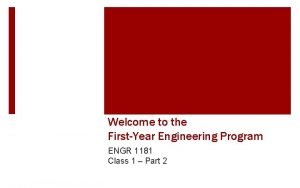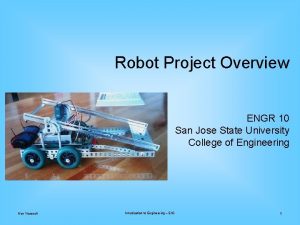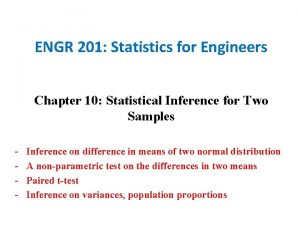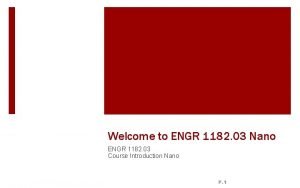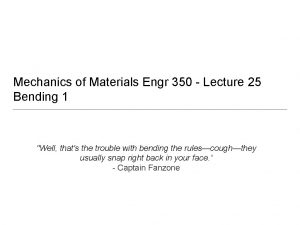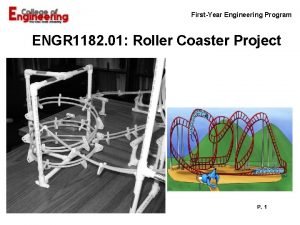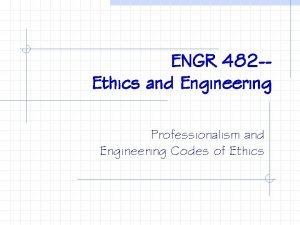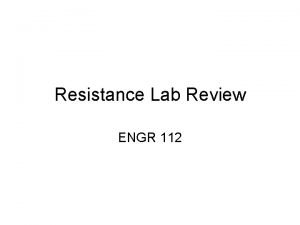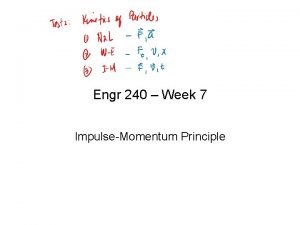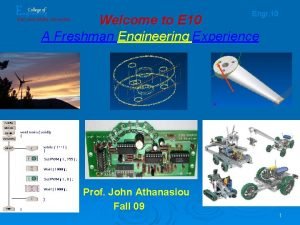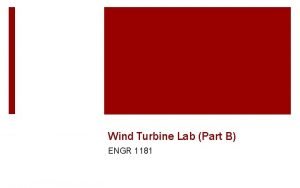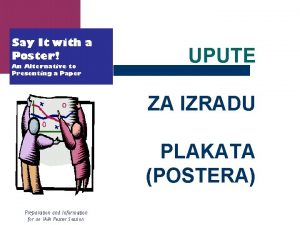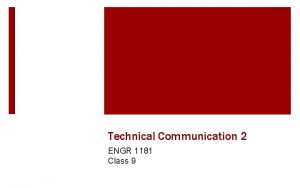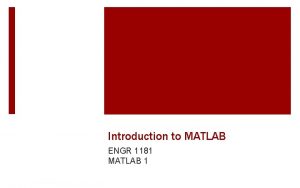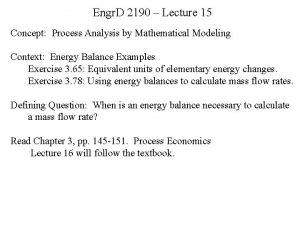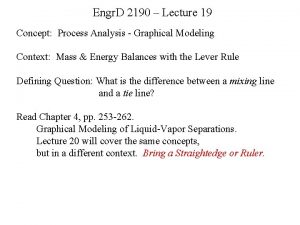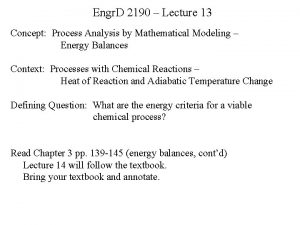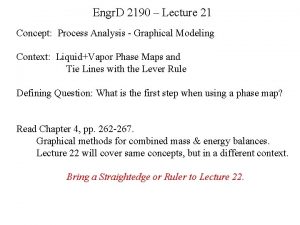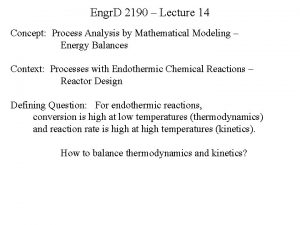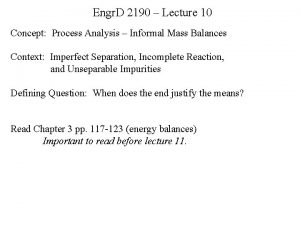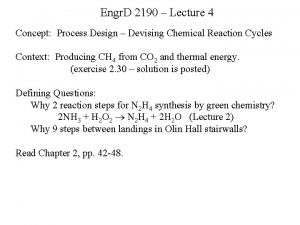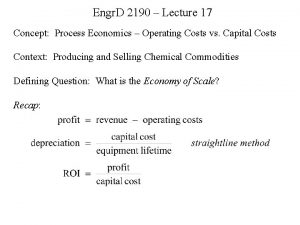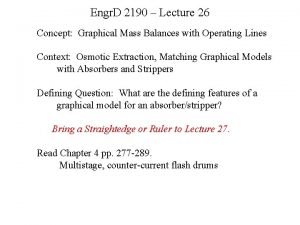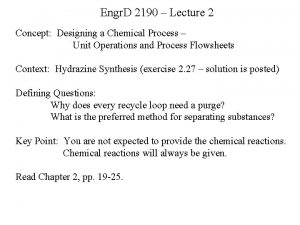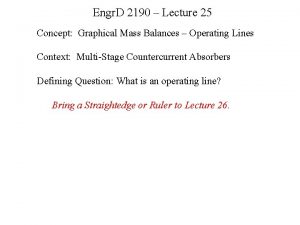Engr D 2190 Lecture 18 Concept Process Analysis

















- Slides: 17

Engr. D 2190 – Lecture 18 Concept: Process Analysis by Mathematical Modeling Context: Process Economics Examples. 1. Recycle or Two Reactors? (exercise 3. 89) 2. When to Replace Key Part? (exercise 3. 111) 3. Order of Separations? (exercise 3. 108) Solutions are posted. Read Chapter 4, pp. 243 -253: Graphical Modeling for Mass & Energy Balances. Lecture 19 will follow the textbook. Bring a Straightedge or a Ruler.

Homework Teams: Peer Evaluations and New Team Questionnaires Due TODAY. New Teams to be announced Friday 10/15. Want to remain with your present team? If so EVERY team member must send e-mail FROM THEIR CORNELL Net. ID to engrd 2190@gmail. com by TODAY at noon. Want to request a team? If so EVERY team member must send e-mail FROM THEIR CORNELL Net. ID to engrd 2190@gmail. com by TODAY at noon. Requested team must have no pairs from present teams. Homework 4 due today at noon. Write team code and names of all contributing team members on all solutions. Indicate this week’s team coordinator. Homework 5 due Friday 10/15: Process Economics: 3. 101 and 3. 107 Spreadsheet Assignment - to be done individually. Optimize a chemical process with respect to ROI. Plans for Equipment Purchases and Operating Parameters due Friday October 22.




All eight permutations can be optimized to a ROI > 0. The maximum ROI is 34%/year. The minimum ROI is 16%/year. You should be able to attain a ROI of at least 16%/year. You should be skeptical if you attain a ROI greater than 34%/year.

Solution is posted.

Solution is posted. operating cost = 1. 60 M$/year operating cost = 2. 00 M$/year

Solution is posted. operating cost = 1. 60 M$/year profit = 1. 10 M$/year operating cost = 2. 00 M$/year profit = 0. 70 M$/year Build Option I.

profit = revenue - operating costs profit = revenue - (production costs + depreciation) profit = 179, 300 $/year = 34% / year

profit = 139, 700 $/year

Alternate solution: regard the part as capital, but with a lifetime of one year. As such, the cost of the replacement part is not an operating cost. = 142, 200 $/year

Alternate solution, continued. Regard the replacement part as capital, but with a lifetime of one year. profit = 142, 200 $/year Compare to first solution to part (B): Replacement part is capital equipment, with a lifetime of 10 years. profit = 139, 700 $/year ROI = 26 %/year

Capital cost is again $523, 000. Operating cost has the additional expense of two replacement parts. These parts are treated as consumable, like reactants or a toner cartridge in a printer. These parts are not capital investments, but operating costs. = 129, 500 $/year

Capital cost is again $523, 000. Operating cost has the additional expense of the labor to replace the part, the cost of one replacement part, plus the rush-order delivery fee of $1000. Like part (B), we produce X for only 49 weeks per year.

Solution is posted.

Solution is posted. capital cost in scheme I < capital cost in scheme II depreciation cost in scheme I < depreciation cost in scheme II energy cost in scheme I < energy cost in scheme II Assume energy cost, material cost, and depreciation are the chief operating costs. Therefore operating cost in scheme I < operating cost in scheme II Because profit = revenue - operating costs, and revenue is the same for both schemes, profit from scheme I > profit from in scheme II And finally, because ROI = profit/(capital cost) we conclude that ROI for scheme I > ROI for scheme II

